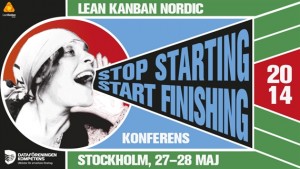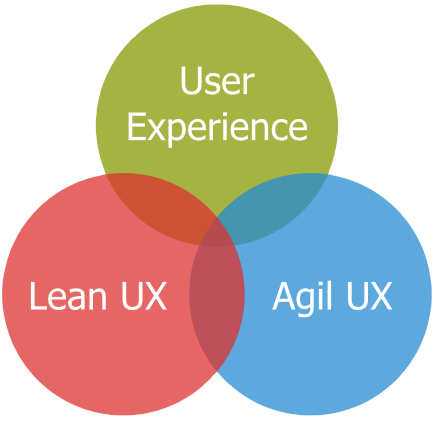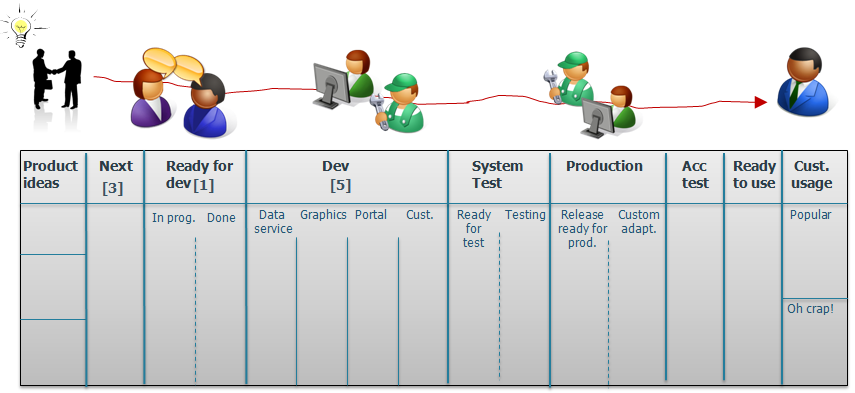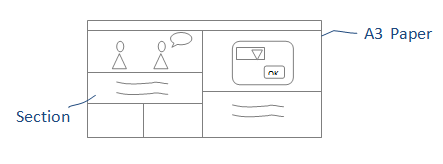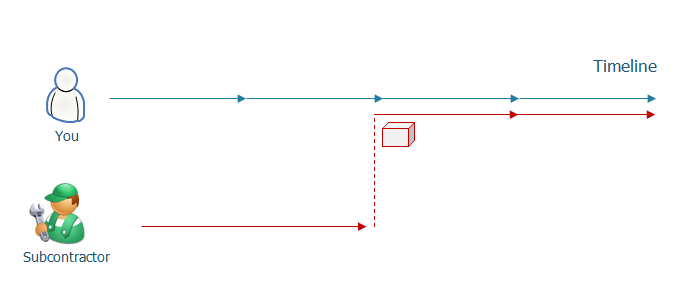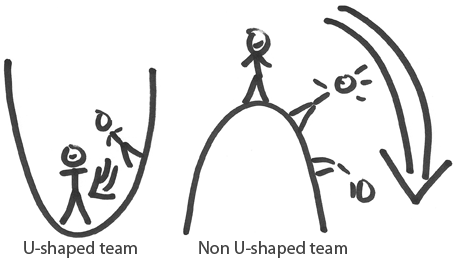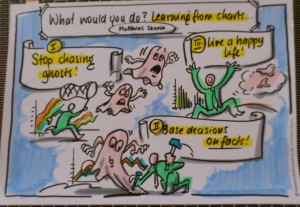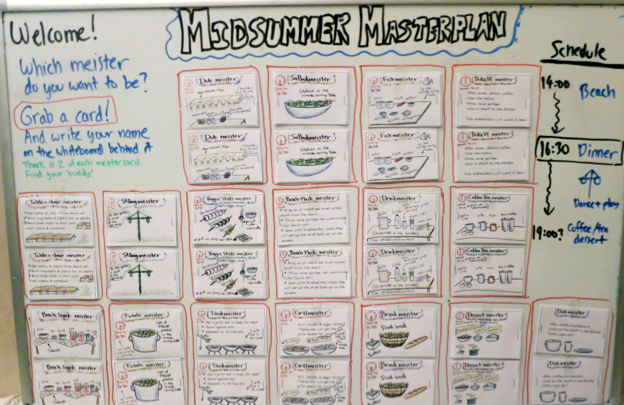This years Lean Kanban Nordic conference will be something extra. The focus in on improving the full value chain, from concept to cash. You will get an unique opportunities to listen and discuss with practitioners sharing their experience of how they have improved their companies using Lean thinking. For example, learn:
Lean UX & Agil UX – modern användbarhetsmetodik
Grunden i traditionell User Experience (UX, användarens upplevelse av en produkt) består av iterativa användarstudier och interaktionsdesign under krav- och designfaserna, för att säkerställa att produkten kommer att uppfylla användarnas behov och ha god användbarhet. Vi ser till att ta reda på vad vi ska bygga innan vi börjar bygga det. Det finns två huvudsakliga problem med det här (som båda beror på vattenfallsmetodikens inbyggda brister). Dels överlämnas resultatet av arbetet i krav- och designfaserna till utvecklarna i stora och svårförståeliga dokument, ofta bestående av flödesscheman och annoterade wireframes som inte speglar den tekniska verkligheten. Detta rent felaktiga sätt att bygga en produkt leder ofta till att man i slutändan bygger fel produkt. Dels sker oftast leveransen av produkten till slutanvändarna långt senare än det var tänkt och då har marknadsläget vanligtvis ändrats, vilket också innebär att fel produkt levereras.
Agila metoder löser problemet med att leverera produkten snabbt nog. Lean Startup (innovationsdriven produktutveckling) löser problemet med att marknadsläget ändras genom att fokusera på affärsmålen genom hela utvecklingscykeln. Inget av dessa paradigm är dock användarcentrerade. För att möta detta problem har två tankesätt utkristalliserats:
- Lean UX, där vi ser till att bygga rätt produkt genom kontinuerlig validering mot affärsmålen av det vi bygger just nu och starkt fokus på att lösa användarnas problem
- Agil UX, där vi ser till att bygga produkten på rätt sätt genom kontinuerligt samarbete runt det vi bygger just nu och fokus på leveransmålen
Coaching questions for a kanban team
Kanban is easy to set up, maintaining and improving is harder! When I visit a kanban team, I use these questions to check they know what they are doing. They are helpful since they are not tool focused, rather verifies that there is a tactic being used. After each question I add “please show it
Continue readingCatch 22 – The egoless, present and curious leader
Every successful implementation of Lean or Agile I have seen has an ingredient that is almost a contradiction. A leader who has low ego (not interested in putting himself first) is present (he/she has active conversations with teams and other leaders such, as change never comes as a complete surprise) is active (he takes part
Continue readingFörbättra från start till mål
I denna video berättar jag om vikten av att se till end-to-end ledtid och att den största förbättringspotentialen hos en organisation med Agila team ofta ligger i stegen innan utveckling påbörjas. (for english readers: In this video I tell about the importance of improving end-to-end lead time – not only think about the development portion
Continue readingVideo from “Improving the full value chain using Lean” @ LKCE 2013
I had the privilege of both attending and speaking at Lean Kanban Central Europe (LKCE) in 2013. (Awesome conference). In my talk I share insights and techniques useful when improving the full value chain, across functions in a software product organization.
Here’s a video on my talk.
Det är inte bara din ScrumMaster som behöver förstå vad “agile” är!
Återigen har ni diskussionen om “working software over comprehensive documentation” verkligen betyder att man inte behöver dokumentera någonting alls. Eller diskussionen om det är ok att förlänga sprinten med några dagar för att hinna klart den sista fixen på den där storyn. Eller diskussionen om vad det egentligen innebär att vara “lean”. Känner du igen dig? Kan det vara så att alla har nytta av att ha samma grundförståelse av centrala begrepp i och runt “agile”? Läs vidare för ett enkelt sätt att skaffa den kunskapen!Continue reading
Enterprise kanban – improving the full value chain using Lean thinking
What happens when we apply kanban across the full value chain? What if you are a traditional company, how far can you improve before organizational structures becomes your key constraint? Can you make great products in a multi team scenario without product owners and project managers? Let me share with you our learning of applying
Continue readingPodcast: Improving interactions through the Lean value chain
I just got interviewed by Joseph Dager at Business901 before the upcoming Lean Kanban Central Europe Conference in Hamburg. You’ll find the podcast here (includes downloadable as mp3 and available through Itunes) See you in Hamburg!
Continue readingSlides from Lean & Kanban Netherlands 2013
It’s a busy week! But could not resist beautiful Utrecht region and Lean Kanban Netherlands with focus “Modern management methods”. Here are my slides from the A3 Workshop, where my goal was to let the participants experience some of the upsides and downsides of using A3 in problem solving knowledge work (hint: you will need
Continue readingSlides from Agile Eastern Europe 2013
Met a great crowd in Kiev at Agile Eastern Europe. I’d love to stay longer! Here are the slides on my presentation on Visualization – what’s my brain got to do with it.
Continue readingSlides from Lean Kanban France 2013
Just back from Paris (gotta love that town, many good memories there 🙂 I did my first presentation on Concepts. Here are the slides. /Mattias
Continue readingCrisp for breakfast?
What’s this? An alien invasion? A publicity stunt? A way of sneaking Crisp into your cereals? You make the call. We Go Lean at breakfast, lunch and dinner! 🙂 This picture was forwarded by Troy Magennis, a Monte Carlo pioneer. PS: Troy is coming to Stockholm to show us how to use Monte Carlo to
Continue readingSlides from Dare – “Visualization, what’s my brain got to do with it?”
Just got back from DARE conference in Belgium. I don’t know how Maarten makes it happen, but I always leave with more ideas than I had when I came. I ran a session on visualization – highlighting our brains limited capacity capture and record knowledge (and what to think of when using visualization). An amazingly
Continue readingIntroducing Concepts
Let me introduce a tool I’ve found useful – Concepts. Concepts is a one page specification, in A3 format that represents a product idea of feature. It is enough to enable a prepared conversation with the engineers developing the product. Think of it as a “flexible minimum specification”. The idea The concept owner is a
Continue readingSources of bug list misuse
Bug lists have the potential to consume a lot of your organizations effort. Bugs drive re prioritization, dispatching, reporting, followup – even though they might be of one time nature and random occurrence. Whenever I encounter a huge bug list is to I ask which of these the organization will fix the upcoming release and
Continue readingGuest blog from Jeff Gothelf – Lean UX in the Enterprise: 5 hills to climb
This is a guest blog from Jeff Gothelf who will have an open course in Lean UX with Crisp in May 2013
Jeff Gothelf has spent a 15 year career as an agile product designer, team leader, blogger and teacher. He is one of the leading voices on the topic of Agile UX and Lean UX. In addition, Jeff is the author of the O’Reilly book (2013), Lean UX: Applying lean principles to improve user experience (www.leanuxbook.com). He is a highly sought-after international speaker and workshop leader. Jeff has led cross-functional product design teams at TheLadders, Publicis Modem, WebTrends, Fidelity, and AOL. In 2012, Jeff launched Proof, a product design and innovation studio that combines lean processes with strategy, design and technology that has since been acquired by Neo.com where he is now Managing Director.
Here is Jeffs course Lean UX – Cross functional collaboration 20-21 of May in Stockholm >
Lean UX in the Enterprise: 5 hills to climb
Expanding my original post on challenges implementing Lean UX in the enterprise, I wanted to add a couple more hurdles that most companies will undoubtedly have to go through to build, collaborative, cross-functional and agile teams.
Co-location is a dirty word
Many large companies are distributed across countries, time zones and cultures. Getting employees to work together is tough enough when they’re sitting across the hall from each other. The distance between distributed teams breaks down a collaborative culture very quickly.Continue reading
How to make it Stick? A Journey from Agile to Lean
I have been working as a consultant for about 6 years by now and under that time there is one thing that has had me really frustrated: how do I make it stick? Success It usually worked like this: I introduce some measure of Agile to setup a project to succeed or to make an
Continue readingWhere is that Red ‘Stop’ Button in Your Development Process?
If you don’t dare to stop the line, continuous integration might be waste. Here is the second part of my three-part series on building the quality in on the SmartBear blog. In the first post of this series, I wrote about Toyoda Sakichi, the founder of the Toyota industries, who invented a loom that would
Continue readingStop the Line – Build Quality In with Incremental Compilation
We in the software industry are still far behind when it comes to automated quality checks. Toyoda Sakichi for example invented the automated loom with stop the line capability almost 100 years ago. I write more about that in my first blog in a three-part series on building the quality in on the SmartBear blog.
Continue readingAddressing critical in deliveries from subcontractors
In software, one of our favorite tool to deal with uncertainty is iterations. But is it always the better option?
The last week I’ve got the question two times of how to address critical in deliveries from subcontractors. For example: hardware, preparation of land, machinery, buildings or third party platform updates. How can these be addressed? Do iterations hold the answer? Are there better options?
Let me introduce lean flow thinking and show how it can be used to improve the outcome of critical third party in deliveries in your projects.
T-shaped people and U-shaped teams
I guess you have heard about T-shaped people, that is, people with deep skills within one or a few areas combined with some knowledge in many areas.
Now it’s time to introduce U-shaped teams. That is, teams that are balanced and where teammates are helping each other. It’s a team where you might have a bad day and are allowed to fail without causing consequences. It’s where the teammates help you get back to normal and what’s more make you feel comfortably included in the team. Your team becomes your safety net and it’s the place where you can dare to be vulnerable. U-shaped teams are also good for productivity since safety means productivity. *
Using continuous improvement in product development
If you prefer this as an article – you can download it here.
What is continuous improvement?
Continuous improvement always starts by observing previous results. That is our baseline for improvements forward on. We strive to improve steadily, a little at a time – 10% is great! But first step is always to accept the facts, regardless if we would have liked it to be better. It is way too easy to sweep failed projects under the carpet rather than used as a baseline for improvements forward on. A mistake easily made is to base improvements on dream targets rather than previous results, it is hard to learn something from failure to meet those targets.
Slides from Lean & Kanban Central Europe 2012
Hi! Just back from a great conference – LKCE 2012 – and a great town – Vienna. A really cool thing was the illustrator who worked around the clock to visualize how he interpreted the difference presentations. He did a great job (see below). What would you do – learning from charts I challenge the
Continue readingLean from the Trenches keynote @ AgileEE, Kiev
Here are the slides for my keynote “Lean from the Trenches” at Agile Eastern Europe, Kiev. And here is the book/ebook, in case you want more details. Thanks for attending!
Continue readingEverybody wants Change – but nobody likes to Be Changed
Here are the slides from my Ale2012 keynote: Everybody wants Change – but nobody likes to Be Changed.
Thanks for coming!
Light-weight problem solving template
Here’s my default approach to problem solving and organizational change. Basically a light-weight version of the A3 problem solving approach and Toyota Kata.
(BTW my keynote at ALE2012 next week is on a similar topic: “Everybody wants Change, but nobody likes to Be Changed”)
R3 – den agila formeln
För ett halvt decennium sedan när jag skulle börja som utvecklingschef på Polopoly kände jag att jag behövde ett verktyg som hjälpte mig att sammanfatta andemeningen och de praktiska konsekvenserna av Agile, Scrum, XP och Lean. Var och en av dessa innehåller en rad – i viss mån överlappande – begrep, som är tydliga och om man kan dem inte så svåra att förklara – om man har många timmar på sig. Men hur minns man hela denna komplexa väv? Hur kan man uttrycka den enkelt, snabbt och koncist?
Self-organizing a 50 person party
Sunshine. Over 35 adults and 15 kids milling about, playing and socializing. Some down by the beach eating snacks and windsurfing. Work going on in the background: Pototoes being boiled, tables being set, drinks brought out, BBQ lit. Nobody is giving orders, things are just happening. Looks rather chaotic. But then at 16:30, precisely on
Continue readingRemote seminar – result of first experiment
I was invited by Agilenetið to come to Iceland and do a talk. That didn’t fit my travel schedule, so we instead decided to do an experimental “remote seminar”. That is, with me on a video link instead of physically in Iceland. I’ve done webinars before, and usually miss the interactivity. I wanted it to “feel” like I was there, discussing and interacting with the participants.

Here’s what we learned:
